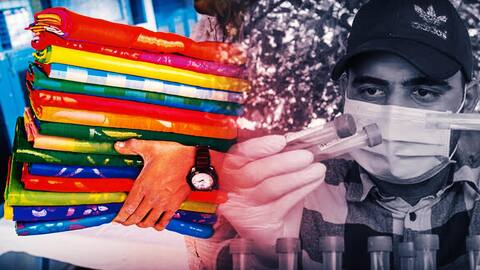Wearing tight petticoats under sarees cause severe health issues, study
What's the story
A recent study published in the British Medical Journal (BMJ) Case Reports has flagged the health risks of wearing tightly tied petticoats under sarees. The research details two cases of a condition dubbed "petticoat cancer," which may be caused by constant pressure and friction from a tight waist cord, causing long-term skin irritation. Doctors from Jawaharlal Nehru Medical College in Uttar Pradesh contributed to the study, explaining how such irritation can lead to ulcers and possibly develop into skin cancer.
Case studies
Study details cases of 'petticoat cancer' in elderly women
The study highlighted two cases of elderly women who developed skin ulcers due to tight waist cords. One was a 70-year-old woman with a painful skin ulcer on her right side for 18 months, with surrounding skin losing pigmentation. The other was in her late 60s, experiencing an ulcer on her right flank for two years after wearing a tight lugda daily for 40 years. Biopsies confirmed both women had Marjolin ulcers, a form of squamous cell carcinoma.
Health advice
Chronic pressure from tight clothing may lead to cancer
One of the affected women stated that the study highlighted the "potential health risks associated with traditional clothing practices," as reported by PTI. In one case, the cancer had spread to a lymph node in the groin at diagnosis. The study's authors warned chronic pressure from tight clothing could cause non-healing ulcers and potential skin cancer. They advised wearing loose petticoats/clothing to reduce pressure and allow healing.
Personal account
Patient's experience highlights dangers of tight clothing
One woman affected by the condition shared her experience, mentioning that she had worn a Nauvari saree, tightly wrapped around her waist, for most of her adult life. She first observed depigmentation on her right flank six years ago but initially ignored it. However, over time, the area turned into a non-healing ulcer. This was later diagnosed as skin cancer due to constant friction and pressure from her tightly tied saree.
Non-healing ulcer
Risks of malignant transformation caused by tight clothing
Researchers note that lesions subjected to continuous irritation may have a higher risk of becoming malignant. They explain that constant pressure at the waist often causes cutaneous atrophy, which eventually leads to erosion or the formation of an ulcer. Due to the ongoing pressure from tight clothing, the ulcer at this site does not heal completely, resulting in a chronic non-healing wound that may eventually develop malignant changes.
